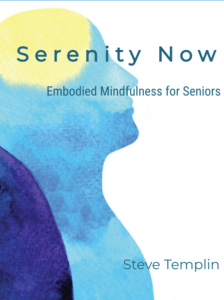If you’ve read much about highly sensitive people you’ve seen articles or books suggesting that your sensitivity is a gift.
If it is a gift, the wrapping isn’t very inviting at first glance. And where the heck is the user manual?
I’ve spent the better part of my adult life, personally and professionally, looking for that manual and over time have been able to piece one together from a variety of sources and experiences.
But why is it such a struggle, such a journey to know how to live more comfortably in a challenging world in one’s own sensitive skin?
I suspect it’s because we’re influenced by a culture that’s head-centric, very cerebral, and disconnected from and ignorant of the felt wisdom and language of the body.
Fortunately, there’s a wealth of new neuroscience that’s supportive of practices and therapies that focus on experiencing the body directly.
Feeling Our Feelings Enhances Brain Function
Here’s where we discover the highly sensitive person’s gift. The HSP has the sensitivity to feel intimately and deeply into the felt experience of the body, a process the neuroscientists call interoception.
Interoception generates feedback from the body to the brain that enhances our capacity for neurological self-regulation and our potential for emotional and physical healing. This potential is not as accessible when we live primarily in our left hemisphere, divorced from input from the right hemisphere and the body.
The research shows that sensory awareness of bodily feelings and sensations …. once again, interoception …. enhances the functioning of our brain and nervous system. This enhanced neurological functioning is experienced as an increase in cognitive abilities, intuitive insight, and heart felt qualities like compassion, empathy, cooperation, and courage.
The research, much of which has been carried out by the HeartMath Institute, also shows the benefits of enhanced interoception to include balancing the autonomic nervous system (ANS), especially the vagus nerve, for all around physical health benefits as well.
To summarize the research, the more sensitively and intimately you can feel, the more effectively your brain and life functions. Said another way, the more that your thinking is divorced from and uninformed by bodily awareness, or interoception, you’re more likely to suffer emotionally, cognitively, or physically.
The challenge for HSPs is learning to safely reconnect with their bodily felt wisdom.
The Challenge to Safely Feel is Two-Fold
The first challenge for HSPs is a cultural one. On the whole, we don’t encourage people to connect with or express their feelings. Often we’re ridiculed or demeaned for showing our feelings. Many of us have heard shaming comments like, ‘big boys or girls don’t cry’, ‘don’t be so sensitive’ and ‘be strong’.
These kinds of comments are most likely meant to help us or to protect the speaker, but the ultimate effect is to shame us and distance us from our feelings, the very foundation of our self-regulating capacities.
We then learn to keep our feelings to ourselves to avoid being judged or shamed. Unless we have a safe way of expressing our feelings relationally to a trusted friend, personal journal, or always loving pet, we’re likely going to unconsciously limit or numb our capacity for feeling.
And darn it, there’s no one to blame. The research suggests that we learn these feeling habits from our parents via a combination of epigenetics, mirror neurons, and observation.
It’s an automatic transfer of survival skills from generation to generation. And we’ll pass those same unconscious habits to the next generation unless we make a conscious choice to learn differently.
The second challenge to feeling our feelings is fear, mostly unconscious fear.
Most humans, and even more so for the highly sensitive ones, will experience emotional pain during childhood. The Adverse Childhood Events (ACE) study from the CDC showed that 61% of adults experienced a significant emotional trauma in childhood. Other studies now suggest that the actual percentage is higher when we consider the impact of attachment injury.
The salient point here is that these painful feelings are unconsciously buried since we don’t have the necessary emotional intelligence or support to process them. These suppressed, stored, or exiled feelings are perceived by the psyche as an ongoing source of threat.
And that buried threat from within is what fuels the autonomic nervous system imbalances that ultimately rob us of emotional, cognitive, and physical resiliency. One of the more detrimental physical symptoms of a dysregulated ANS is an increase in inflammatory processes.
Connecting with Your Body to Enhance Self-Regulation
We can think of these more embodied practices as ‘techniques’ that help to balance the nervous system and our lives. We can also think of these practices as a way to welcome and befriend our inner life of feelings, sensations, thoughts, memories, and imagery.
More and more I find myself opting for the second point of view. This is really akin to building a safe and trusting relationship with our core being of felt experience. This more connected and accepting relationship with ourselves allows for more meaningful connection with others as well.
And it just so happens that when we engage openly and honestly with others …. and ourselves …. we activate the ventral aspect of the vagus nerve that makes self-healing on all levels a possibility.
Here are a series of steps for safely reconnecting with your body’s felt wisdom. When practiced over time this more right brain style of attending to your body’s sensations and feelings will lead to an enhanced capacity for more effective emotional and physical self-regulation.
Take your time and only continue if this process feels safe and relatively comfortable.
1. Sit comfortably and begin to notice your body. Notice feelings or sensations in your hands for at least 15 seconds since it tends to take that long for our neurology to begin to shift towards more balance. Breathe slowly while noticing your hands curiously.
2. Next, notice any sensations or feelings in your feet. Even the most subtle sensations count …. actually subtle sensations count more. Notice curiously for at least 15 seconds.
You may feel a shift from our more culturally dominant left hemispheric mode of thinking to a more right hemispheric mode of sensing …. a sort of letting go … a softening of your focus. If this shift is experienced as a welcome change then take some time to appreciate it.
On the other hand, if it’s somehow unpleasant, that may simply be a sign that this ideally helpful neurological shift is unfamiliar. With time and gentle practice the familiarity will grow and with it a felt sense of greater ease will emerge.
3. Now tune into your torso and notice sensations or feelings. You’re just noticing curiously, effortlessly. There’s nothing to fix, figure out, or understand. Those are left brain strategies that we’re temporarily putting on hold. You can also be aware of your thoughts, or any imagery that appears, or any memories. This step is akin to being mindful with an emphasis on felt experience.
4. Next, choose an issue. For this exercise choose a small problem or concern, something that you feel needs some attention. And then notice the thoughts and feelings that accompany that issue. Most importantly notice where and how you feel that in your body. Notice and make a mental note about where and how intensely it’s felt.
5. Creating Safety. This is the step where we shift the state of the autonomic nervous system to allow for more resiliency in our system. For starters, in this step we’re shifting into the ventral branch of the vagus nerve, we’re inhibiting the stress response, and creating more orderly and calming alpha brain waves.
Breathe slowly into the front of your heart while bringing to mind something, someone, or some place that warms your soul. Think of someone or something you love. You can bring to mind a favorite place in nature. Just be playful, imaginative, and creative in bringing something to mind that’s easy for you to really savor or appreciate …. and savor that experience for a good 30 seconds to a minute while you’re breathing slowly into your heart.
6. Now, from this more balanced ventral vagal state, go back to the issue you identified in step four. Choose the same aspect of the same issue and notice how it weighs on you now. It’s very likely that the issue will now seem easier to be with, or less intense. Additionally, there may also be some new awareness, insight, or intuition. If there’s been some degree of a positive shift, take 30 seconds or more to really appreciate the difference. Appreciating or savoring how something has changed for the positive is a trigger for positive neuroplasticity.
If you haven’t noticed a change that’s okay. With more practice you’ll reinforce the new neural pathways that pave the way to safely experiencing our feelings and experiencing relief and forward movement.
HSPs Have a Much Needed Gift to Share
Being a highly sensitive person is potentially a gift to ourselves, our friends and families, and our world. A world that is in need of more creative insight, intuitive guidance, compassion, cooperation, courage, and love.
These wonderful and healing qualities are naturally and innately expressed when we live more and more in the embodied, heart focused, ventral vagal branch of our ANS, as opposed to the branches that are defense and survival oriented.
The daunting task of turning the tide of personal, familial, and cultural dysfunction has to start some place and some time.
Hopefully it starts here and now with the sensitive beings who possess the desire and the gifts to make it possible.


 Steve is a retired Doctor of Oriental Medicine, Acupuncture Physician, and HeartMath Trauma-Sensitive Certified Practitioner with over 35 years of clinical experience in the fields of Energy Medicine, Energy Psychology, and Biofeedback.
Steve is a retired Doctor of Oriental Medicine, Acupuncture Physician, and HeartMath Trauma-Sensitive Certified Practitioner with over 35 years of clinical experience in the fields of Energy Medicine, Energy Psychology, and Biofeedback. 